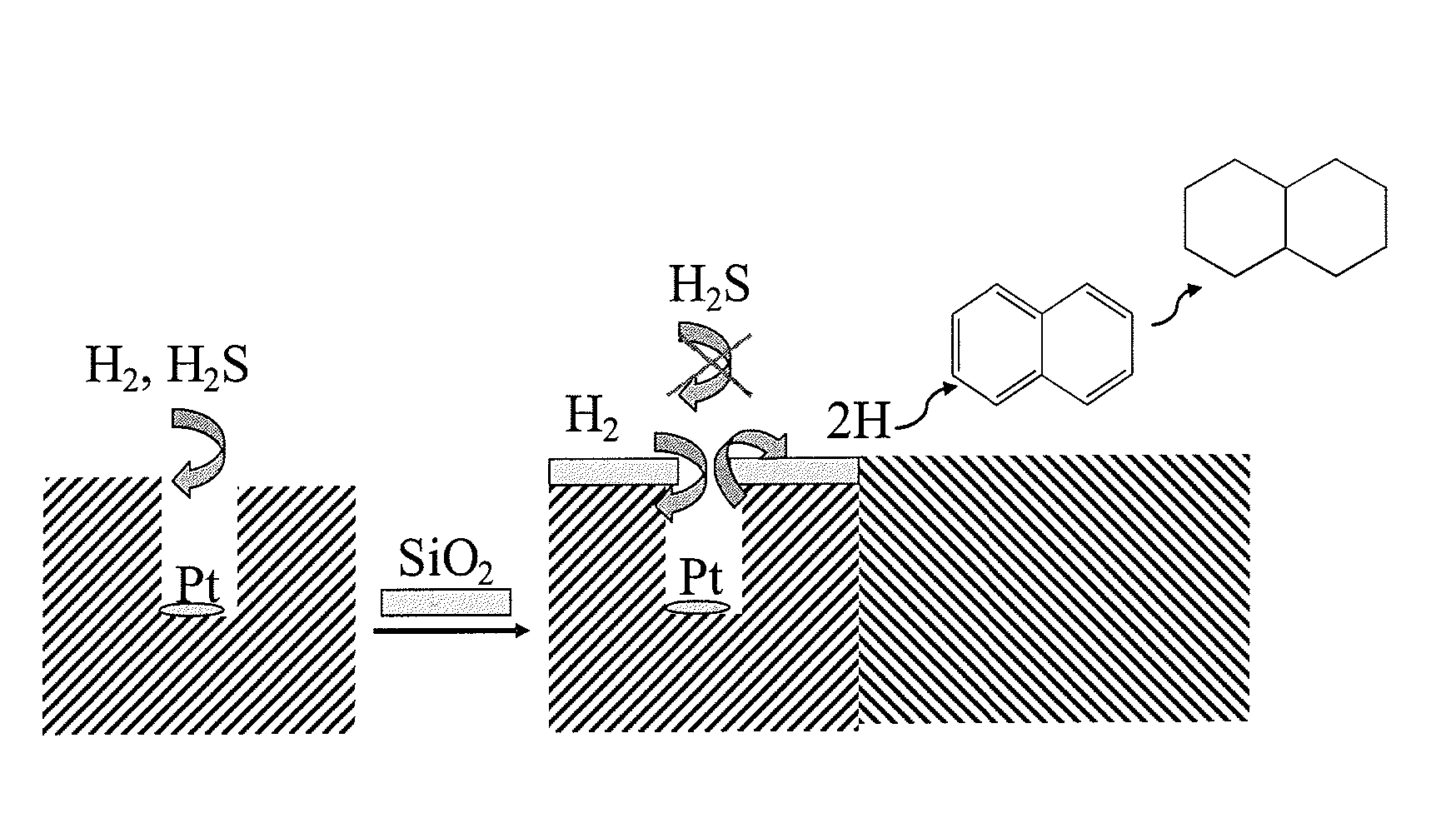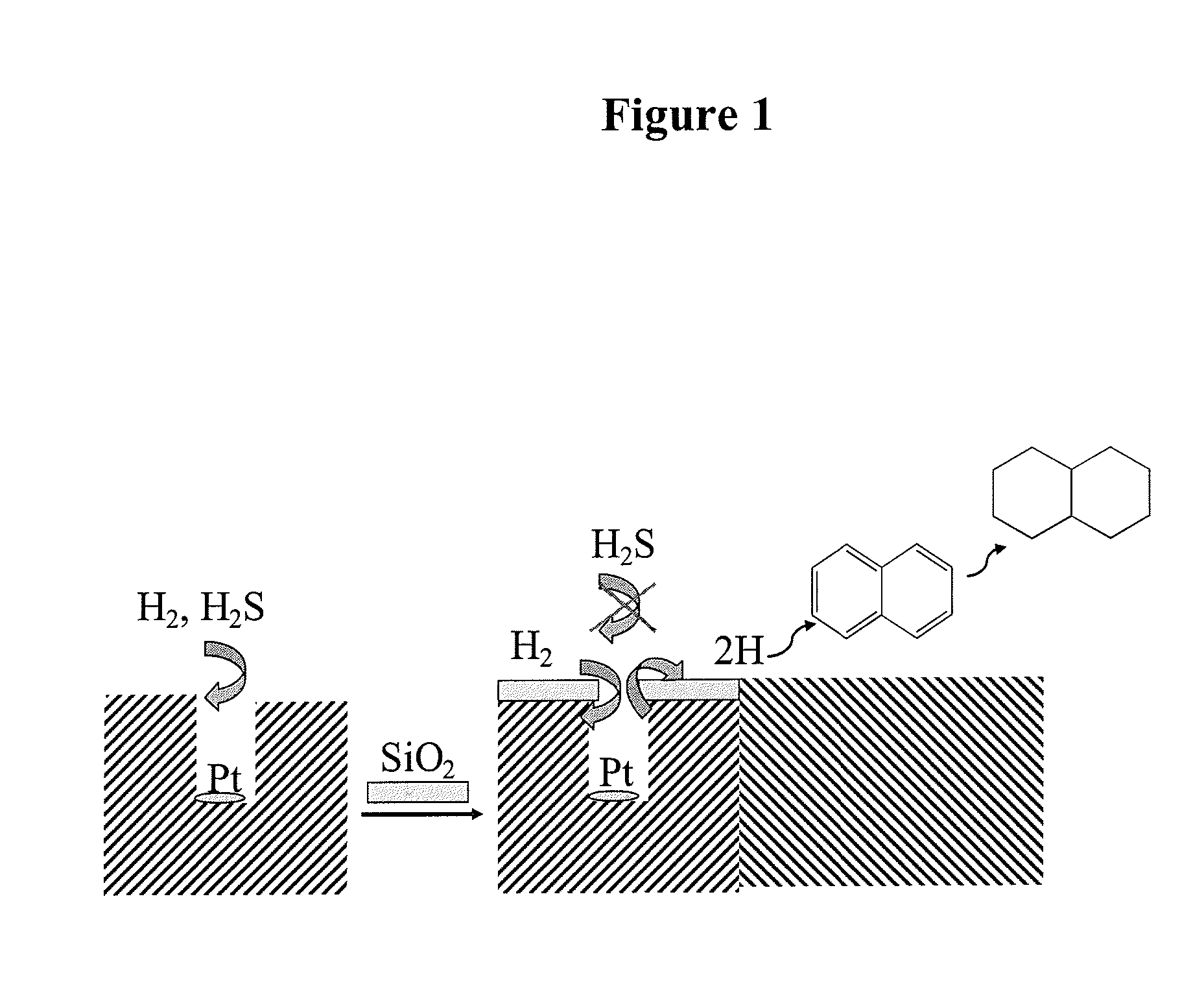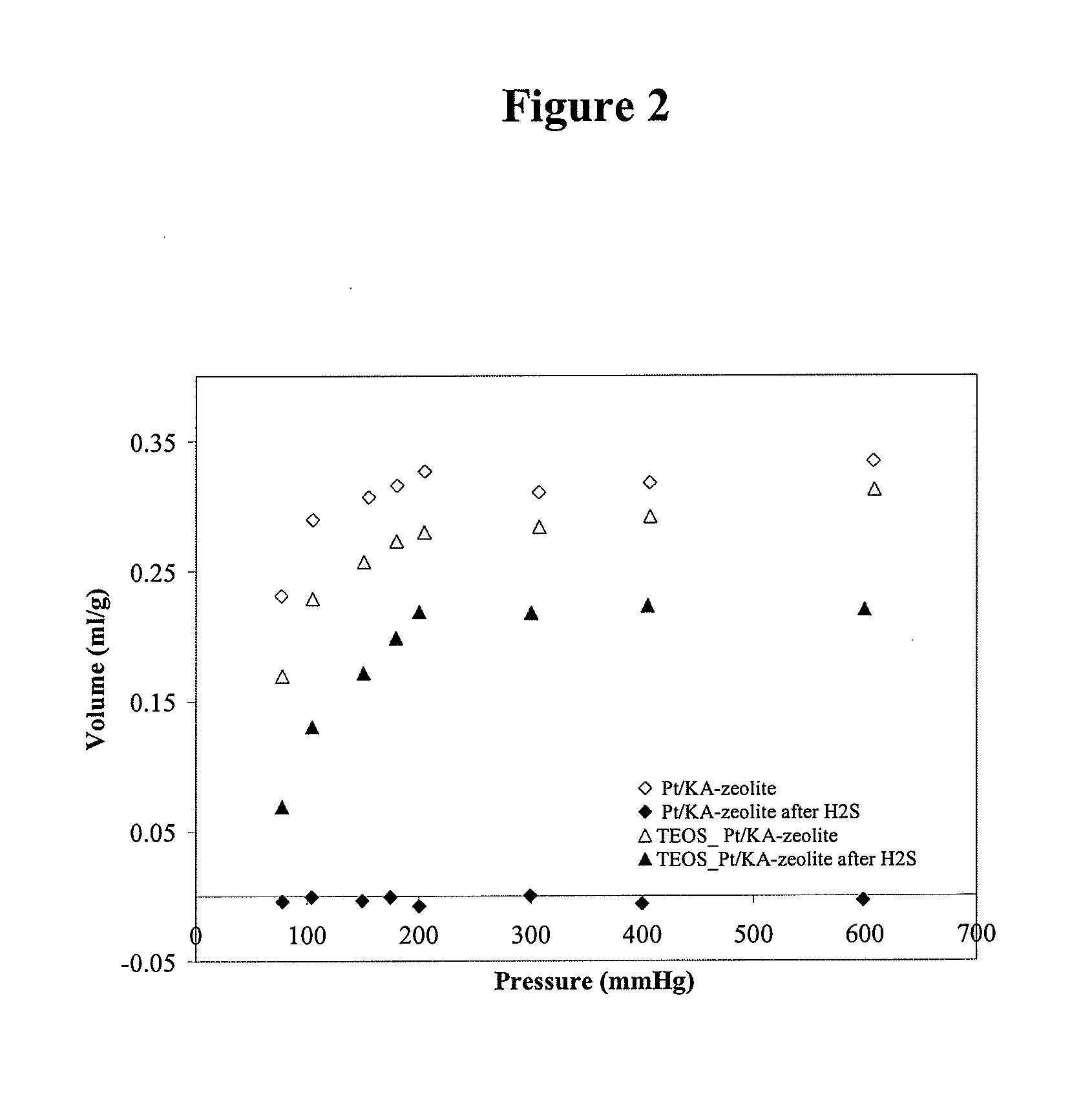Sulfur-resistant noble metal nano-particles encapsulated in a zeolite cage as a catalyst enhancer
a noble metal and catalyst enhancer technology, applied in the field of noble metal catalysts, can solve the problems of inability to completely eliminate the sulfur poisoning effect, the development of sulfur resistant noble metal catalysts has always been a great challenge, and the sensitivity to poisoning, so as to reduce the size of pores
- Summary
- Abstract
- Description
- Claims
- Application Information
AI Technical Summary
Benefits of technology
Problems solved by technology
Method used
Image
Examples
example
[0026]The following example serves to merely illustrate particular aspects of the invention, and in now way represents the scope of the invention as a whole.
1. Preparation of Pt / Na(K)A-zeolite
[0027]Sodium aluminate (Na2O. Al2O3. 3H2O) and sodium metasilicate (Na2SiO3) were used as aluminum and silicon sources, respectively. Three solutions were prepared for the synthesis: A) sodium aluminate in deionized water; B) sodium meta silicate in deionized water; C) Pt(NH3)4Cl2 in deionized water. Solution A was first combined with solution C, to which was added solution B. The mixture was heated up to reflux and reacted under stirring for 7 hours. The solid product was separated from the liquid phase by filtration and washed repeatedly with deionized water. The Pt / NaA-zeolite was ion-exchanged three times with 0.5 N KCl solution at 80° C. The solid was thoroughly dried at room temperature, then it was dried at 120° C. for 2 h before calcination at 400° C. for 2 h. Pt / KA-zeolite was then sub...
PUM
| Property | Measurement | Unit |
|---|---|---|
| temperature | aaaaa | aaaaa |
| temperature | aaaaa | aaaaa |
| temperature | aaaaa | aaaaa |
Abstract
Description
Claims
Application Information
 Login to View More
Login to View More - R&D
- Intellectual Property
- Life Sciences
- Materials
- Tech Scout
- Unparalleled Data Quality
- Higher Quality Content
- 60% Fewer Hallucinations
Browse by: Latest US Patents, China's latest patents, Technical Efficacy Thesaurus, Application Domain, Technology Topic, Popular Technical Reports.
© 2025 PatSnap. All rights reserved.Legal|Privacy policy|Modern Slavery Act Transparency Statement|Sitemap|About US| Contact US: help@patsnap.com



